Introduction to a Spurious Narrative
Excessive attention to the 80 year old World War II Holocaust prompts questions: “Why have constant reminders of the World War II Holocaust failed to halt contemporary holocausts; has the attention distracted from careful watching of ongoing genocides, and has it enabled Israel’s destruction of the Palestinian community?” Public Broadcasting’s documentary, The U.S. and the Holocaust, adds to the controversy ─ presenting a spurious narrative that insults the dedication of the American people in freeing the world of German, Italian, and Japanese oppression, which saved hundreds of millions of people who would have suffered if that oppression continued.
Added to the controversy are the obvious questions: Why now, what is the need for telling present day Americans that their long gone ancestors of the ”greatest generation” may have erred by not fully assisting a portion of the hundreds of millions around the world who needed help in escaping Japanese and Nazi oppression? Why has PBS resurrected the past rather than more meaningfully examined America’s role in destruction of contemporary ethnicities?
Disclaimer: I grew up during World War II in a large Jewish neighborhood in the Bronx, New York. We had close family in Warsaw, Poland and Paris, France. Several of them died during the Holocaust and others suffered greatly during the wartime years. Our family’s wartime history appears in the book, After they Were Gone. From knowledge and experience, the PBS documentary is a spurious narrative of America’s relation to the Holocaust, misleading in its delivery, meaningless in its thrust, and generates suspicion as to the reasons for its presentation.
The documentary stumbles from the title: The U.S. and the Holocaust. A preferred title could be: The U.S. and the World War II Refugee Crisis, which the documentary does explore. The stumble becomes a complete failure in the opening introduction, with solemn voices expressing opinions that intend to shape the viewer’s mind before seeing the documentary, subtly accusing American officials of complicity in carrying out the Holocaust and assigning to Americans a share in the guilt. We hear from Deborah Lipstadt:
How serious is America’s commitment to looking at the dark marks in its past? Where did we go wrong? How can we not go wrong the next time? Episode of America and the Holocaust is not one that we dance about.
The voice of a refugee follows this specious diatribe:
How did America treat its refugees? Those refugees who lost their lives because the Golden Door was not wide open.
The succeeding discourse to the opinionated and solemn voices creates an America haunted by bigots, xenophobia, eugenic theorists, and white nationalists, engaged in halting immigration from undesirable sources and reshaping immigration in the 1921 and 1924 immigration bills. These bills eventually established quotas, which are presented as a calculated deterrent to Jewish refugee entry into the United States after the Nazis gained control of Germany.
The commentator stresses that Eastern Europe was most affected by quotas, “and it was no accident that these countries had Europe’s largest Jewish population,” suggesting that the framers of the immigration bills had Jews in mind when preparing the quotas, and insinuating a direct link between the quota system and the Holocaust. More precisely, the nations that had lower quotas — Eastern Europe, Italy, Spain, and even France — were all predominantly Catholic nations and their state religion would have been a more likely cause for lower quotas.
Restrictions on immigration had a pernicious factor and xenophobia did not entirely guide the European quotas. The 1920 era immigration laws, which replaced a haphazard immigration policy with a firm reference to laws, eventually culminated in the National Origins Formula. Based on the 1920 Census of the U.S. population, a census that included all of the immigrants, from the mass emigration during the last decade of the nineteenth century and first part of the twentieth century, the formula “aimed to preserve the existing ethnic proportions of the population as calculated according to data from the 1920 census of the population.” It took effect on July 1, 1929, before the start of the Great Depression and years before the rise of Nazi Germany.
In the National Origins Formula, Episcopalian United Kingdom, whose predecessors constituted almost the entire Thirteen Colonies, had the largest annual quota (65,721); Lutheran Germany, which had a small but sizeable Jewish population, had the second largest (25,957); and Catholic Irish Free State, whose previous emigres were treated as unwanted and second class citizens in the United States, had the third largest quota (17,853). Cultured and educated France, which enabled the Revolutionary War to succeed, was allowed only 3,086 emigrants to the U.S. The xenophobia arrangement of the immigration laws affected the Chinese; entirely excluded, they could not escape the violence and oppression from the Japanese invasion.
Continuing to voice opinions from individuals, such as Madison Grant, who had racial issues with immigrants, the documentary equated distinct voices with mainstream Americans. Popularity of eugenics among a few pseudo scientists and social practitioners enabled the documentary to link an esoteric lobby in America and a set of sterilization laws passed by some state legislatures to the Nazi promotion of racial purity. The documentary informs us that Americans, most of whom never heard the word eugenics or knew its meaning, “embraced the new pseudo-science. Eugenics was used to sterilize the ‘wrong’ people, snuff them out, and that was the eugenics the Nazis would pick up on.” We are told that Hitler, when in prison, was pleased with America for its restrictive laws (Was a reporter in the prison with him?) and “they mirrored Hitler’s own beliefs.” Yes, Hitler coordinated Mein Kampf with America’s racial attitudes and doctrines.
Gathering steam by having the damned few serve as damnation of America, the documentary turned its attention to the America Firsters, a group of distinguished Americans who encouraged neutrality. Industrialist Henry Ford, social activist, Father Coughlin, and aviation hero, Charles Lindbergh, also assigned Jewish financiers as culprits in the push to war. Producer Lynn Novick, in an interview with CBS News, claimed that when Lindbergh spoke, Americans listened. If so, why did Americans overwhelmingly vote for the internationalist Franklin Delano Roosevelt in four elections and relegate Charles Lindbergh to obscurity? Even if anyone listened to the rabble rousers, how did their rhetoric and American obedience translate into affecting the Holocaust? Nowhere does the documentary show any attachment between the America Firsters, who finished last, and the World War II Holocaust, which occurred after the U.S. entered the war. Why even mention their presence? What is the reason for insertion of this detail into the documentary?
America, as a racist and predatory country that had enslaved people, stolen lands, fought innumerable wars, and committed genocide of the Indigenous peoples, does not need an attachment to the World War II Holocaust to survey and criticize its past. The Holocaust only shackles proper analysis and discussion of shameful aspects of America’s history. Nor does the Holocaust need an attachment to America to reveal its horror and alert the world to its significance.
This article argues that the documentary is different than titled: America and the Holocaust. It is another documentary on the Holocaust with a twist ─ uses spurious information to link the American people and their administration to the catastrophe ─ and for a reason ─ to pursue a hidden agenda. A one-sided video presentation adds nothing to the already available knowledge, serves as a manipulation, and corrupts public understanding.
This has been only an introduction to the detachment from reality of the controversial documentary, America and the Holocaust. A more complete examination of the program and statements made by its producers — Ken Burns, Lynn Novick, and Sarah Botstein — demonstrates the documentary is misleading, serves no purpose, and has a hidden agenda.
Debate of America’s Role in Persecution of German Jews and in the Holocaust
PBS producers, in interviews with CBS News, explained the documentary. Producer Lynn Novick states that, “Instead of opening doors (to Jewish refugees), we shut them.” History and statistics do not validate this remark.
The U.S. Holocaust Memorial Museum describes the emigration of Jews from Nazi Germany.
In January 1933, there were some 523,000 Jews in Germany, By September 1939, approximately 282,000 Jews had left Germany and 117,000 from annexed Austria. Of these, some 95,000 emigrated to the United States…At the end of 1939, about 202,000 Jews remained in Germany and 57,000 in annexed Austria, many of them elderly. By October 1941, when Jewish emigration was officially forbidden, the number of Jews in Germany had declined to 163,000, most elderly.
Although some German Jews died from Nazi violence before U.S. entry into World War II, about seventy percent of German Jews were able to emigrate, with the largest number coming to the United States, ten percent, either survived the war in Germany or died from natural causes, and twenty percent were deported and died in the later Holocaust.
The Yivo Institute report Jewish migration for the past hundred years, Jacob Lestchinsky, 1994, estimates 150,773 Jews immigrated to the United States between 1936 and 1943. U.S. immigration records have 251,124 European immigrants entering the United States during that period.
Although Jews were only a few percent of the European population, during the latter years of the Great Depression, when economic difficulties created a barrier to immigration and a mass of the European population sought asylum from Fascist and Communist oppression, the U.S. opened its doors to 150,000 plus Jews. This number was 60 percent of the immigration to the United States during that time, not two or three percent, but 60 percent, several magnitudes more than any other ethnicity that entered America’s shores.
Assuredly, not all doors were open, but does the preceding information appear as, “Instead of opening doors (to Jewish refugees), we shut them.” The documentary fails to examine the reasons why more could not be done for the refugees and why German quotas were not immediately filled.
- Communication and transportation were not nearly as eloquent as today. Obtaining visas, contacting relatives, preparing transportation, obtaining funds and finding a way were slow and tedious processes, featuring snail mail, teletype exchanges, typed notes, everything done without email, computers, and digitized data bases.
- In 1931, the pre-Nazi Weimar Republic introduced capital controls and a 25% wealth tax on emigration. In 1933, the new Nazi controlled government revised the thresholds, and the tax dissuaded and prevented many Jewish Germans from initially leaving the country.
- Over the years, Germany slowly froze Jewish assets. Although not proven, a principal reason for Germany slowly freezing Jewish assets and engaging in its own boycott of Jewish enterprises seems to have been the boycott of German goods. Organized by Jewish groups in the United States as a response to violence and harassment by Nazi Party members against Jews in early 1933, which were confined and sporadic at that time, the boycott of German goods met opposition from American, German, and British Mandate Jews, who tried to appease Hitler. Believing the violence would be only a passing phase from Nazi Party element, these Jews feared anti-German measures by Jewish organizations would increase the violence and anger German citizens. The anti-German boycott definitely hardened Nazi attitudes and reinforced their belief that Jews were engaged in an international conspiracy. The boycott failed in its endeavors; did it enable the 1933 Nazi government, when it did not have a majority and its governance was tenuous, to strengthen, survive, and succeed in its endeavors?
From the New York Times, March 31, 1933.

Calls for sanctions were resisted by German Jews and many in pre-state Israel. Newly uncovered documents reveal the passions and arguments surrounding the controversy.
We being Jews ourselves are astonished and disgusted with this propaganda against Germany, being based on absolutely untrue statements. The news of cruelties, murdering of Jews, men and women, etc., are perfect lies from beginning to end. This news comes from and is spread abroad by certain traitors, literary men, who fled from Germany when the National Government was formed, and is supplied by communistic circles.
The Nationalist Socialists took advantage of the anti-German boycott and used it as a reason to promote the boycott of Jewish establishments.The Nationalist Socialists took advantage of the anti-German boycott and used it as a reason to promote the boycott of Jewish establishments.

The U.S. State Department did what all government foreign affairs agencies do ─ make believe they listen to constituents and try to avoid trouble with other governments.

- A portion of those with frozen assets managed to emigrate, 60,000 going to Palestine as parties to the Ha’avarah (transfer agreement). Signed on August 25, 1933, by the Zionist Federation of Germany, the Anglo-Palestine Bank (under the directive of the Jewish Agency) and economic authorities of Nazi Germany, the agreement allowed Jews to sell their assets in Germany in payment for German manufactured goods to be exported to Zionist companies in Mandatory Palestine. Upon arrival, these Jews received a partial return, in monetary terms, of their assets.
An article, “The Transfer Agreement and the Boycott Movement: A Jewish Dilemma on the Eve of the Holocaust,” Yf’aat Weiss at Vad Yashem substantiates the argument that the freezing of Jewish assets played a role in undoing the economic boycott against Germany. The article states, “Correspondence between Heinrich Wolff, the German consul in Palestine, and the German Foreign Ministry shows that shattering the boycott was a key motive for the German authorities in concluding the Transfer Agreement.”
- The Roosevelt administration could not immediately overcome previous President Herbert Hoover’s instructions for the State Department to block immigrants who might not be able to support themselves. Due to this directive, bureaucratic consular officials often denied visas to people considered “likely to become a public charge.” FDR’s 1936 re-election landslide permitted officials to modify immigration policy. From Time Magazine, The Troubling History of How America’s ‘Public Charge’ Immigration Rule Blocked Jews Fleeing Nazi Germany, by Richard Breitman, October 29, 2019
After making it known that some consuls had been too strict in their use of the public charge, in January 1937, George Messersmith, now promoted to assistant Secretary of State, wrote a new visa instruction to consuls in Europe, telling them they should not reject applicants based on the mere possibility that they might become public charges. The result was a sudden increase in immigration from Germany, to about 50% of the quota. By the middle of 1938 the monthly quotas were filled.
- Because of the Great Depression, immigration was not encouraged and quotas in all major countries were hardly filled. In 1930, at the start of the Great Depression and before visa requirements became more severe, 23,445 Irish immigrants entered the United States. In 1935, only 453 immigrants came from an Ireland that had a quota allowance of 17,853, continually had citizens eager to migrate to the United States, and had relatives willing and able to receive them.
- The rarely mentioned flip side to immigration restriction is that during the Depression 1930s the U.S. exercised deportations that it euphemistically labelled “repatriation drives.” Former California state senator Joseph Dunn determined that local governments and officials deported up to 1.8 million people to Mexico and estimates about 60 percent of these people were citizens, many of them born in the U.S. to first-generation immigrants.
- Although severe persecution of citizens occurred in the Soviet Union throughout the 1930s, Ukraine in the early 1930s, Spain in the late 1930s, and China, due to Japanese aggression during the 1930s, the U.S. government did little to assist any of these persecuted peoples to escape their tormentors. By concentrating on a persecution, to which the U.S. authorities eventually responded, and by ignoring other persecutions, to which the U.S. authorities never responded, did PBS show a racial bias?
- When the persecution of German Jews intensified, showed signs it was there to stay, and the seriousness of the situation faced by the German Jews became realized, the U.S. government rectified its approach and did much to enable Jews to leave Germany and find a new home.
In spring 1941, Nazi Germany prevented emigration from its country and from its occupied nations. Escape doors were locked, and America could no longer play a vital role in enabling refugees to leave Europe. After December 7, 1941 and a declaration of war with Germany, U.S. authorities had no means to acquire first-hand information on the impending doom of European Jewry. The U.S. administration juggled rumors, sketchy information, and considerations of what to and how to do it until the Holocaust, which intensified in mid-1942, became completely known.
Spurious Statements During War Years
The program’s producers, supposedly objective observers, answered CBS’ staged questions with spurious answers: “Can’t blame lack of action on lack of information.” “Everything was known — mass deportations, mass killings, all this was known.” “Great coverage in newspapers.”
Reports, statistics, and information demonstrate there was no “lack of action” before U.S. entry into the war on December 7, 1941, after which actions became difficult. Articles mentioning unconfirmed atrocities appeared sporadically and mainly in inner pages. Spoken and printed words could not convey the force of the tragedy. Unlike today, when global events are televised, rapidly communicated, easily shared, mass produced by a multitude of sources, repeated daily, and locked for posterity in Internet databases, knowledge of global events in the World War II years was limited, disseminated by the printed word, spoken word, and a 15 minute movietone newsreel for weekly movie goers. Having lived during the war period, I can testify that, if the event did not directly involve the person and was not accompanied by proven images, the written and spoken words did not sufficiently register. Americans read, pondered, and moved on to the stories that most interested them — battles in the Pacific, movements in the Atlantic, what was happening to their children fighting on two fronts. Even if the public knew, what could the public do? What would John Doe, sitting in his living room in Houston, Texas, do after he read an article on a terrible tragedy to people in a German concentration camp?
Famines, during which millions of people died in China, India, and Ukraine occurred during 1927-1943, and few people knew or paid attention to them. By not having the media abundance and multitude of expressions available today, the public could not contextualize the Holocaust and the Holocaust could not gain attention from the public and government officials. Without first hand evidence, officials refused to believe that the Germans, considered one of the world’s most intellectual and civilized people, would perpetrate the crimes attributed to them. The Holocaust in American Life, Peter Novick, Houghton Mifflin claims that “William L. Shirer, author of the Berlin Diary, who during the war was a European correspondent for CBS, reported that it was only at the end of 1945 that he learned ‘for sure’ about the Holocaust; the news burst upon him ‘like a thunderbolt.’” The mindset of today cannot judge the mindset of those fatal years.
Eduard Schulte, a prominent German industrialist, revealed to American officials the depths of the World War II Holocaust.
An Anti-Nazi and informant to Polish and Swiss intelligence, Schulte, during a July 29, 1942 trip to Switzerland, presented to Swiss Jewish investment banker, Isidor Koppelmann, his discovered revelation of Nazi Germany’s plans to exterminate European Jews. Eventually, Gerhart Riegner, the World Jewish Congress representative in Geneva, received the information. After being frustrated by American officials in Switzerland, Gerhart Riegner managed to pass the information to the State Department, which deliberated until the report could be confirmed.
After confirmation of the Riegner report, Undersecretary of State Sumner Welles authorized Rabbi Stephen S. Wise of the American Jewish Congress to release the information to the press. Secretary of State, Cordell Hull, followed with his own telegram to America’s ambassador in the United Kingdom.
The Secretary of State to the Ambassador in the United Kingdom (Winant)
Washington, December 11, 1942—midnight.
The Department accepts the proposal of the British Government for the issuance of a joint declaration in regard to the reported determination of the German Government to exterminate the Jewish people of Europe.
The documentary examines a few, very few, possible avenues that the U.S. administration could have used to assist Jewish refugees in Europe, but were supposedly thwarted by the U.S. administration. All of them seemed credible; deeper analysis exposes their failures.
PBS accuses the State Department of purposeful neglect for denying a June 23, 1943 request from Gerhart Riegner, the Swiss-based representative of the World Jewish Congress. Riegner asked for a special license from the Treasury Department foreign funds division, headed by John Pehle, in order to send money to help Jews in enemy territory. State Department staff said they were concerned that the funds might fall into Nazi hands. An incomplete story.
The State Department proceeded slowly in approving the funds and eventually approved them at the end of the year. Governments, during that era, did not easily give money to people who have their own humanitarian organization; they sponsored organizations for well-defined and well organized tasks. One commentator created doubts about the episode by stating that the money could be used to forge passports and bribe custom officials. How could Jews in Poland reach a neutral country (what neutral country?) and apply for entrance? Is it credible that the State Department would be party to bribing customs officials in a neutral country?
Contacting the Nazi government and offering to bring out the stricken Jews is lightly touched upon. Having the United States engage in dialogue with the enemy Nazi State, trust it, permit it to dictate, and trade material resources for humans does not seem plausible. How in war ravaged Poland, with Russian troops close to the Polish border, could any transfer be organized? Why would Germany, which was using the Jews for slave labor to help its war effort, release them?
The documentary mentioned that bombing the concentration camps and the rail lines that delivered the victims to them had been a widely discussed method for freeing the Jews from their oppression ─ another wild scheme.
If the military was convinced that bombing camps and rail lines to them were effective means to liberate the camps, then they would have bombed the prisoner of war camps. Bombings did not have the precision they have today; hitting within 10 miles of the target was more the norm. In this case, hitting the target meant the prisoners would have died earlier — either from the bombs, shot while fleeing, rounded up and shot, or more likely dead from starvation. No food was available for those already emaciated and unable to walk distances.
The U.S. could not adequately respond to the certification of the dimensions of the Holocaust until the beginning of 1943, at the same time its army took the offensive and the Russian military gained the initiative. As the military approached the killing fields, and, as the documentary notes, the U.S., in January 1944, created the War Refugee Board, part spy agency, part humanitarian agency, and part rescue agency. The War Refugee Board staff estimates they saved tens of thousands of lives, mainly toward the end of the war in Hungary, and assisted in rehabilitating the lives of many more. When the U.S. ascertained the appropriate time to act, the appropriate place to act, and the appropriate way to act, the Roosevelt administration acted. For some it was too little and too late, but those who make that charge are yet to prove that much could have been done to free the Jews imprisoned in slave labor camps in the middle of occupied Germany territory.
The PBS documentary naively informs us of what we already know — that America is not entirely altruistic, that it invited immigrants when needed as cheap labor to work the mines and factories and build an industrialized country, that nations operate in self-interest for their own citizens and are cautious in reaching out to help others. The producers showed no understanding of a crucial element in the belief mechanism that differentiates the early 20th century public with the contemporary public ─ belief is reinforced and confirmed when you or someone you know are there or able to observe videos, films, or a series of photographs that complement the written or spoken word.
After six hours, the documentary emerges as another documentary on the World War II Holocaust, containing a calculated intent of using spurious information to link the American people and their administration to the catastrophe. Why was this necessary? What was the reason? Did the PBS producers pursue a hidden agenda?
The Hidden Agenda
After being left numb by the PBS 3-part and six hour series, America and the Holocaust, questions emerge: Why now, what is the need for telling present day Americans that their long gone ancestors of the ”greatest generation” may have faulted by not fully assisting a part of the hundreds of millions around the world who needed help in escaping Japanese and Nazi oppression? Why has PBS resurrected the past and dwelled on what might have been, rather than what can be, and more meaningfully examined America’s role in destruction of contemporary ethnicities?
If the purpose of the documentary was to alert Americans to be more vigilant in their duty to assist oppressed peoples in escaping from genocidal actions, why reference a decades old tragedy that involved a long past generation and, in which, nothing can now be done? Why not discuss contemporary genocides for a contemporary audience, with those involved with the tragedies?
We have the 1975-1979 Cambodian genocide, in which the U.S. replacement of Cambodian leader Prince Norodom Sihanouk by Marshall Lon Nol, played an indirect role. This audacious coup invigorated support for the Khmer Rouge, who gained power and proceeded to annihilate an approximate 1.7 million people of Cambodia society.
In the 1994 Rwandan genocide, where 800,000 people are reported to have died, the U.S. did nothing but make a few movies, decades after the happening.
On March 21, 2022, six years after the genocide started and had already been completed, the U.S. Secretary of State confirmed that members of the Myanmar military committed genocide and crimes against humanity against Rohingya people. The State Department also noted that this was the eighth genocide after World War II. What did the U.S. do to stop the genocide? Nothing. How many Rohingya refugees have been admitted to the United States? Maybe, a few thousand.
The United States has played a direct role, economically, militarily and politically in supporting Israel’s calculated destruction of the Palestinian people. By any definition, Israel’s expulsion of about one million Palestinians (same number as listed by the U.S. State Department in its declaration of the Royhinga genocide), seizing and stealing of Palestinian lands, daily killings and incarcerations of Palestinians, severe restrictions on their movements, confining them to a limited and narrow territory, constantly harassing them by destroying their agriculture and limiting their water supplies, and, most importantly, denying them self- identity that derives from being part of a state that protects its citizens, is genocide.
Nationality and religion enhance identity and are an answer to ontological security. The latter two words are more than an esoteric expression. They define what the Palestinians lack and most need. The absence of ontological security has accelerated deterioration of the Palestinian community, a process deliberately engineered by Israel in its severe repression.
In the documentary, Deborah Lipstadt says, “If ‘the time to stop a Holocaust is before it happens,’ then it means you have to lay on the table the ingredients that go into it. Maybe these ingredients don’t add up to it… But if you’re seeing people assembling, in the kitchen, the same ingredients, you’ve got to say, you cannot wait until the meal is prepared.”
Well, Ms. Lipstadt, do what you say, don’t wait, inform the authorities in the government you now inhabit to get on the ball and thwart the intended genocide of the Palestinian people.
If the documentary does not fulfill its purpose when it could fulfill a purpose, what is the purpose of the documentary? Note that, “All Burns films are released with teaching guides and are intended for use in the classroom, but getting The U.S. and the Holocaust into schools was of particular importance to the filmmakers because they saw an opportunity to fit it into the dozens of statewide Holocaust education mandates that have been passed.” Put it all together and we have the obvious: The documentary has an agenda, which is to have the present and future generations of Americans believe they have committed a grave commission against the Jewish people and owe the Zionists and Israel continuous support in their destruction of the Palestinians, today, tomorrow, and forever.
Ken Burns has been quoted, “This is his most important documentary.” If that is his belief, then previous documentaries can be categorized as trivial and unimportant. This documentary insults the memory of those who died in the World War II Holocaust, encourages hatred of Americans, and reinforces a claim that Jews have excessive control of the U.S. media. While pretending it values lives, the documentary, surreptitiously, contributes to the destruction of others. PBS should begin an introspection of its operation ─ is it a public broadcaster with allegiance to its public or does it serve as a public relations servant for a foreign government?
The post
PBS Spurious Narrative of America and the Holocaust first appeared on
Dissident Voice.
This post was originally published on Dissident Voice.
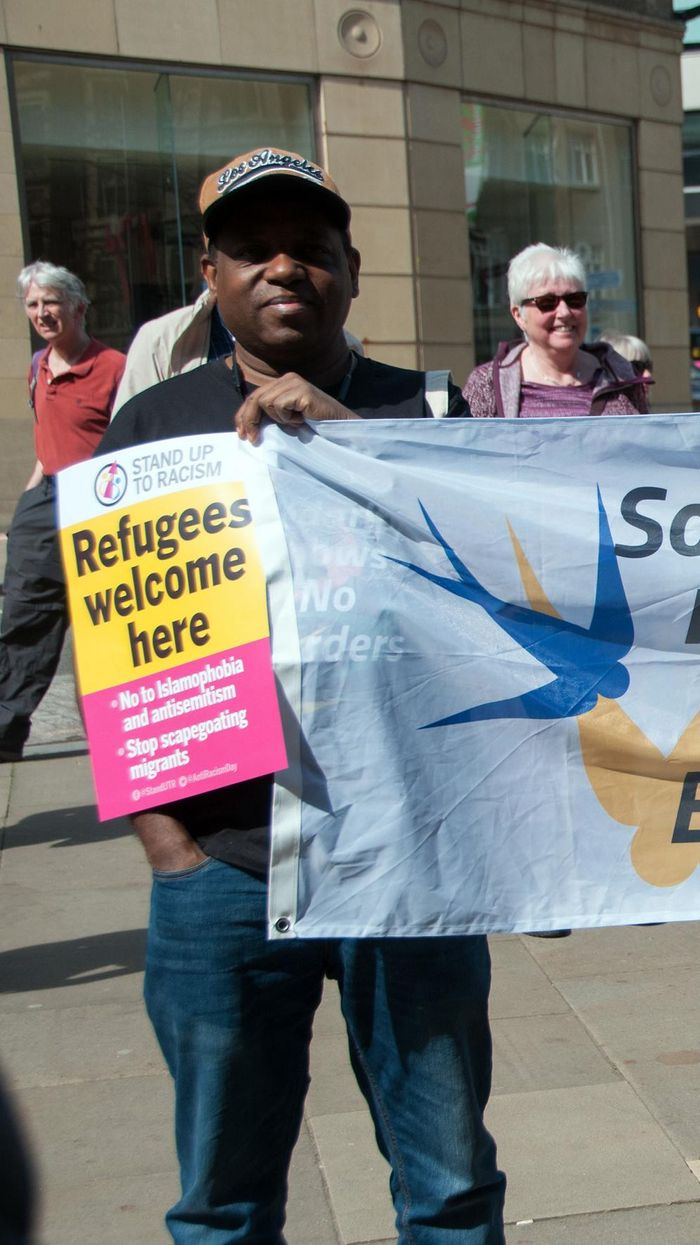
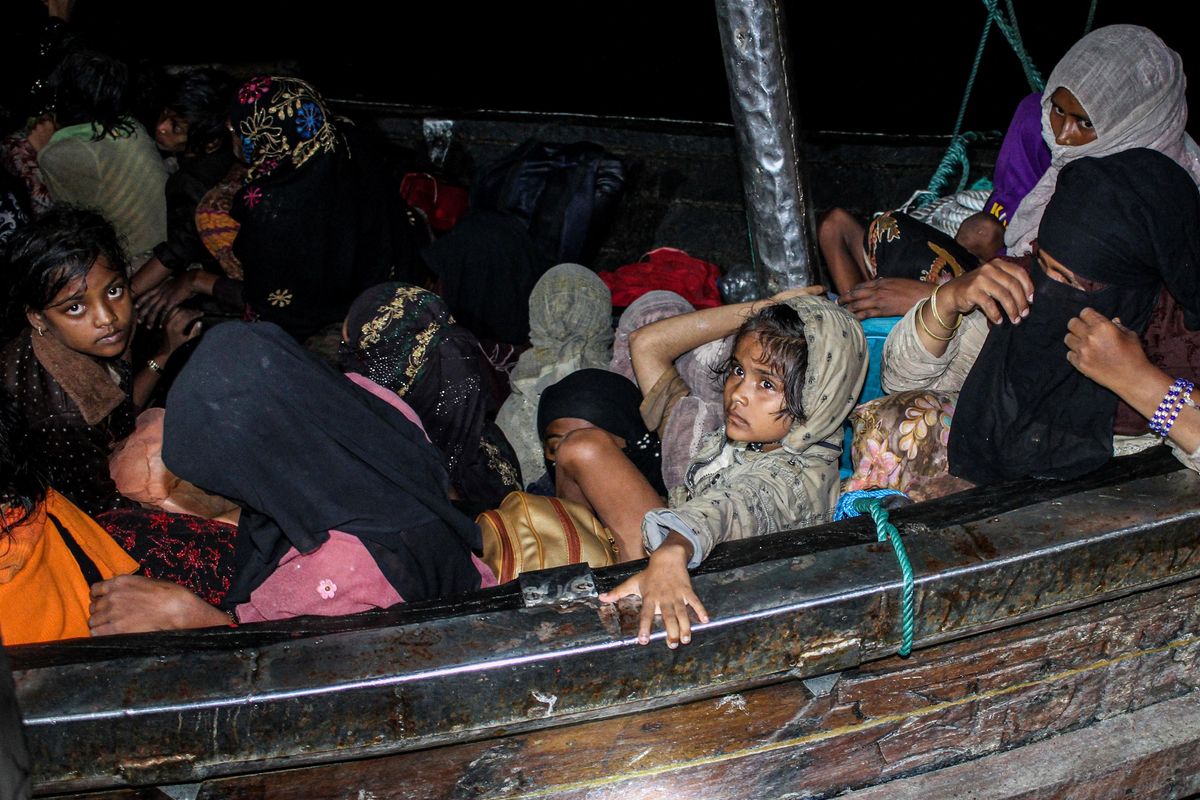
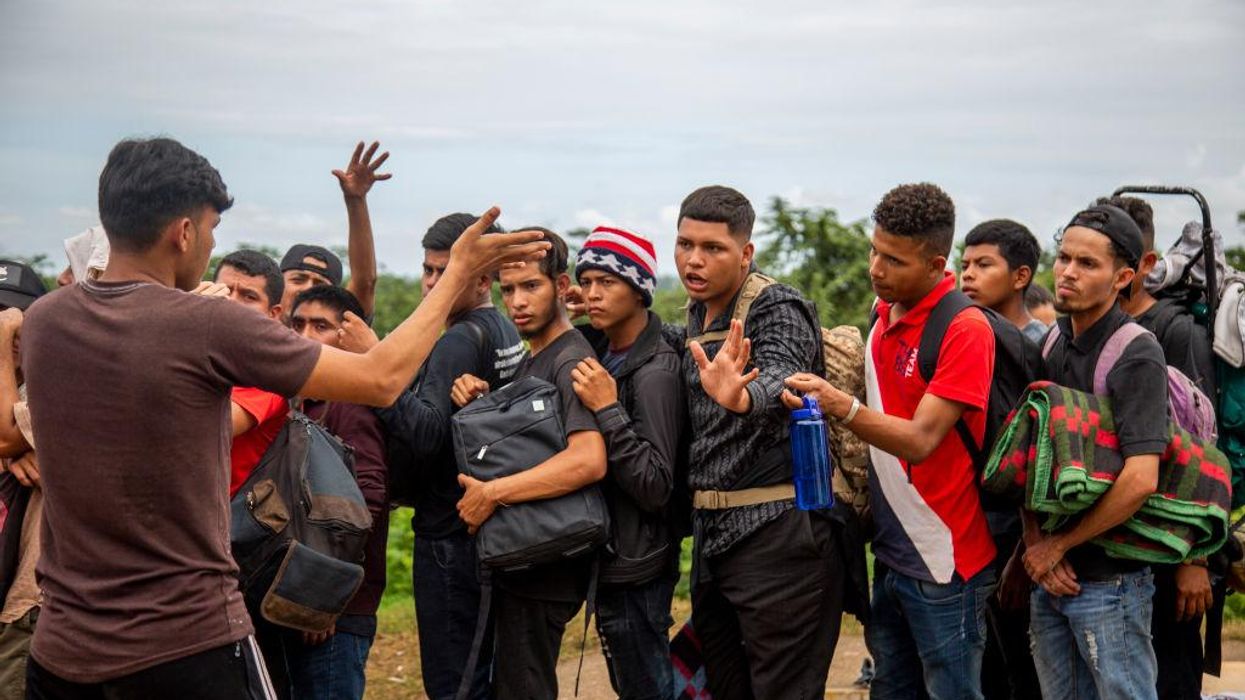
 (@sabir_zazai)
(@sabir_zazai)  BREAKING
BREAKING 


 FBPE #GTTO #PR (@Beany_1)
FBPE #GTTO #PR (@Beany_1) 

 (@PiranhaPete1)
(@PiranhaPete1) 

 (@alanmaddison20)
(@alanmaddison20) 
 BLM #StaySafe (@CurlyClareToo)
BLM #StaySafe (@CurlyClareToo) 
 If you can donate a phone by dropoff or post, please get in touch with AADD.procurement@gmail.com for details
If you can donate a phone by dropoff or post, please get in touch with AADD.procurement@gmail.com for details M2 3AA
M2 3AA SAVE these legal advice cards
SAVE these legal advice cards SHARE with other protesters
SHARE with other protesters WRITE phone numbers on your arm
WRITE phone numbers on your arm FIND Legal Observers for assistance
FIND Legal Observers for assistance 
 Sky 501, Virgin 602, Freeview 233 and YouTube
Sky 501, Virgin 602, Freeview 233 and YouTube 

